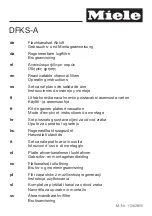
7
PROCEPTOR®
TECHNICAL MANUAL
Figure 2.2 :
Proceptor in Operation
Figure 2.3 :
Typical Proceptor Profile
3 Sizing Guidelines
Proceptor sizing information is based on best available data including laboratory testing (in-house), field testing, theoretical
modeling, and monitoring studies. Proceptor sizing information is continually being updated with the most accurate available
information to assist in sizing a proper unit for a specific application.
Incorrect sizing, improper installation and/or inefficient maintenance will affect the performance of Proceptor separators.
3.1 STANDARD SIZING CONSIDERATIONS
The following are standard sizing considerations for typical sites. If the site conditions are different from the below, please
contact a Zurn Green Turtle representative for assistance.
1 Flow Type.
The separator must be gravity fed.
2 Pollutant.
Proceptor separators remove free oil, grease and settleable solids. The standard sized separator cannot
remove chemically emulsified or dissolved oils. Consult a Zurn Green Turtle representative for sizing assistance if
emulsified oil/grease are present.
3 Temperature.
The inlet water temperature must be between 4ºC (39ºF) and 60ºC (140ºF). For industrial applications,
please contact a Zurn Green Turtle representative for assistance.
4 Specific Gravity.
The oil and grease specific gravity must be less than 0.95. Specific gravity of the wastewater must be
equal to or greater than 1.0.
5 Detergent Use.
For equipment wash down, car wash, or any other applications where soaps and detergents will be used,
oil and grease emulsification may be a problem and can reduce the effectiveness of the separator. It is recommended
that “Quick Break Soaps” be used since the chemical emulsification will break quickly thus allowing the oil and grease
separator to perate as designed.
6 Wastewater Strength.
Notify a Zurn Green Turtle representative if chemicals of any kind are expected to be present in
the process water or if the effluent is high temperature. A special resin may be required in tank manufacturing.
7 Discharge Limits
. Many local authorities have minimum size requirements or very conservative factors. Please verify with
your local municipal sewer authority and plumbing code regulations.
8 Installation Depth.
Separators up to 3000 gallons buried more than 6’ from the top of the tank to grade, and separators 4000
gallons or more buried more than 4’ from the top of the tank to grade will require reinforcement at an additional charge.








































